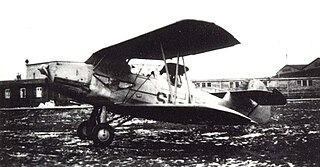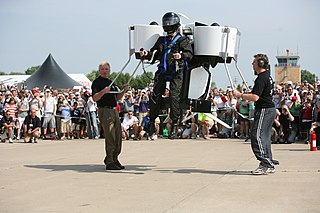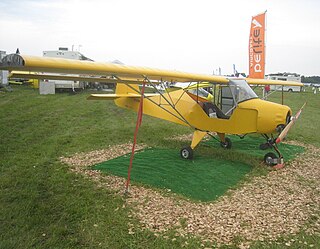
The Convair 880 is an American narrow-body jet airliner produced by the Convair division of General Dynamics. It was designed to compete with the Boeing 707 and Douglas DC-8 by being smaller and faster, a niche that failed to create demand. When it was first introduced, some aviation circles claimed that at 615 mph (990 km/h), it was the fastest jet transport in the world. Only 65 Convair 880s were produced over the lifetime of the production run from 1959 to 1962, and General Dynamics eventually withdrew from the airliner market after considering the 880 project a failure. The Convair 990 was a stretched and faster variant of the 880.

The Mikoyan-Gurevich I-250, aka MiG-13, was a Soviet fighter aircraft developed as part of a crash program in 1944 to develop a high-performance fighter to counter German turbojet-powered aircraft such as the Messerschmitt Me 262. The Mikoyan-Gurevich design bureau decided to focus on a design that used something more mature than the jet engine, which was still at an experimental stage in the Soviet Union, and chose a mixed-power solution with the VRDK motorjet powered by the Klimov VK-107 V12 engine. While quite successful when it worked, with a maximum speed of 820 km/h (510 mph) being reached during trials, production problems with the VRDK fatally delayed the program and it was canceled in 1948 as obsolete.

The Piper PA-46 Malibu and Matrix are a family of American light aircraft manufactured by Piper Aircraft of Vero Beach, Florida. The aircraft is powered by a single engine and has the capacity for one pilot and five passengers. Early Malibus were all piston-engined, but a turboprop version, introduced as the Malibu Meridian but now called the M500, is also available. Currently, Piper offers the M350, M500, and M600 in the PA-46 family.

The Douglas A2D Skyshark was an American turboprop-powered attack aircraft built by the Douglas Aircraft Company for the United States Navy.

The Mil Mi-6, given the article number izdeliye 50 and company designation V-6, is a Soviet/Russian heavy transport helicopter that was designed by the Mil design bureau. It was built in large numbers for both military and civil roles and used to be the largest helicopter in production until Mil Mi-26 was put in production in 1980.

The Arado Ar 66 was a German single-engined, two-seat training biplane, developed in 1933. It was also used for night ground-attack missions on the Eastern Front. It was engineer Walter Rethel's last design in collaboration with Arado, before Walter Blume, assigned as Arado Flugzeugwerke's chief design engineer in 1933, took over the bulk of the Arado firm's design duties.

The Ling-Temco-Vought (LTV) XC-142 was a tri-service tiltwing experimental aircraft designed to investigate the operational suitability of vertical/short takeoff and landing (V/STOL) transports. An XC-142A first flew conventionally on 29 September 1964, and on 11 January 1965, it completed its first transitional flight by taking off vertically, changing to forward flight and finally landing vertically. Its service sponsors pulled out of the program one by one, and it eventually ended due to a lack of interest after demonstrating its capabilities successfully.

The Burnelli CBY-3 Loadmaster is an unconventional transport aircraft that was designed by American engineer Vincent Burnelli and built in Canada in 1944 by Canadian Car and Foundry.

The Savoia-Marchetti SM.91 was an Italian long-range fighter-bomber prototype, designed to compete in a contract offered by the Regia Aeronautica to the Italian aircraft companies in 1938.
The Eagle AC-7 Eagle 1 is an aircraft that was manufactured by Windecker Industries. It was the first composite airplane to receive FAA certification in December 1969 at a reported development cost of US$20,000,000. The fiberglass process was named "Fibaloy" by Windecker.

The Martin Jetpack was a single-person aircraft under development. Despite its name, it did not use a jet pack as such, but ducted fans for lift. Martin Aircraft Company of New Zealand developed it, and they unveiled it on 29 July 2008, at the Experimental Aircraft Association's 2008 AirVenture in Oshkosh, Wisconsin, US. The US Federal Aviation Administration classified it as an experimental ultralight airplane.

The Aerial Reconfigurable Embedded System (ARES) was a concept for an unmanned VTOL flight module that can transport various payloads. The concept started as the TX (Transformer) in 2009 for a terrain-independent transportation system centered on a ground vehicle that could be configured into a VTOL air vehicle and carry four troops. ARES' primary function was the same as TX, to use flight to avoid ground-based transportation threats like ambushes and IEDs for units that don't have helicopters for those missions. It was to be powered by twin tilting ducted fans and have its own power system, fuel, digital flight controls, and remote command-and-control interfaces. The flight module would have different detachable mission modules for specific purposes including cargo delivery, CASEVAC, and ISR. Up to 3,000 lb (1,400 kg) of payload would be carried by a module.

The Belite Superlite is a single-seat, high-wing, single-engine ultralight aircraft developed from the Kitfox Lite aircraft especially for the United States FAR 103 Ultralight Vehicles category.
The Thor T/A is a Canadian ultralight aircraft that was designed by Thorsten B. Strenger and produced by Thor Air of Weston, Ontario. The aircraft was supplied as a kit for amateur construction.
The Procaer Cobra was a two-seat turbojet powered light aircraft designed and built in Italy and flown in the early 1960s. Only one was completed.
The V-STOL Super Solution 2000 is an American STOL homebuilt aircraft that was designed by Dick Turner and produced by V-STOL Aircraft Corporation of Fort Myers, Florida. When it was available the aircraft was supplied as a kit for amateur construction.

The Skyship 500 is a non-rigid airship designed and built in the United Kingdom during the 1980s.

The Tactical Robotics Cormorant, formerly AirMule or Mule, Israel Defense Forces (IDF) codename Pereira (Dragonfly), is an unmanned flying car UAS designed by Rafi Yoeli and built by Tactical Robotics LTD., a subsidiary of Urban Aeronautics LTD. in Yavne, Israel. It will be used in search and rescue operations where it would be too dangerous or inaccessible for a helicopter, such as evacuating people from the upper stories of burning buildings, or delivering and extracting police and soldiers while very close to structures, narrow streets, and or through holes into confined spaces.
The Spring WS202 Sprint was a Canadian homebuilt aircraft that was designed and produced by William J. Spring of Burlington, Ontario, introduced in 1996. The aircraft was supplied in the form of plans for amateur construction.
The Stargate YT-33 is an American homebuilt aircraft that was designed and produced by Stargate, Inc of McMinnville, Oregon, introduced in 1994. The aircraft is a 2/3 scale replica of the Lockheed T-33 jet trainer.














